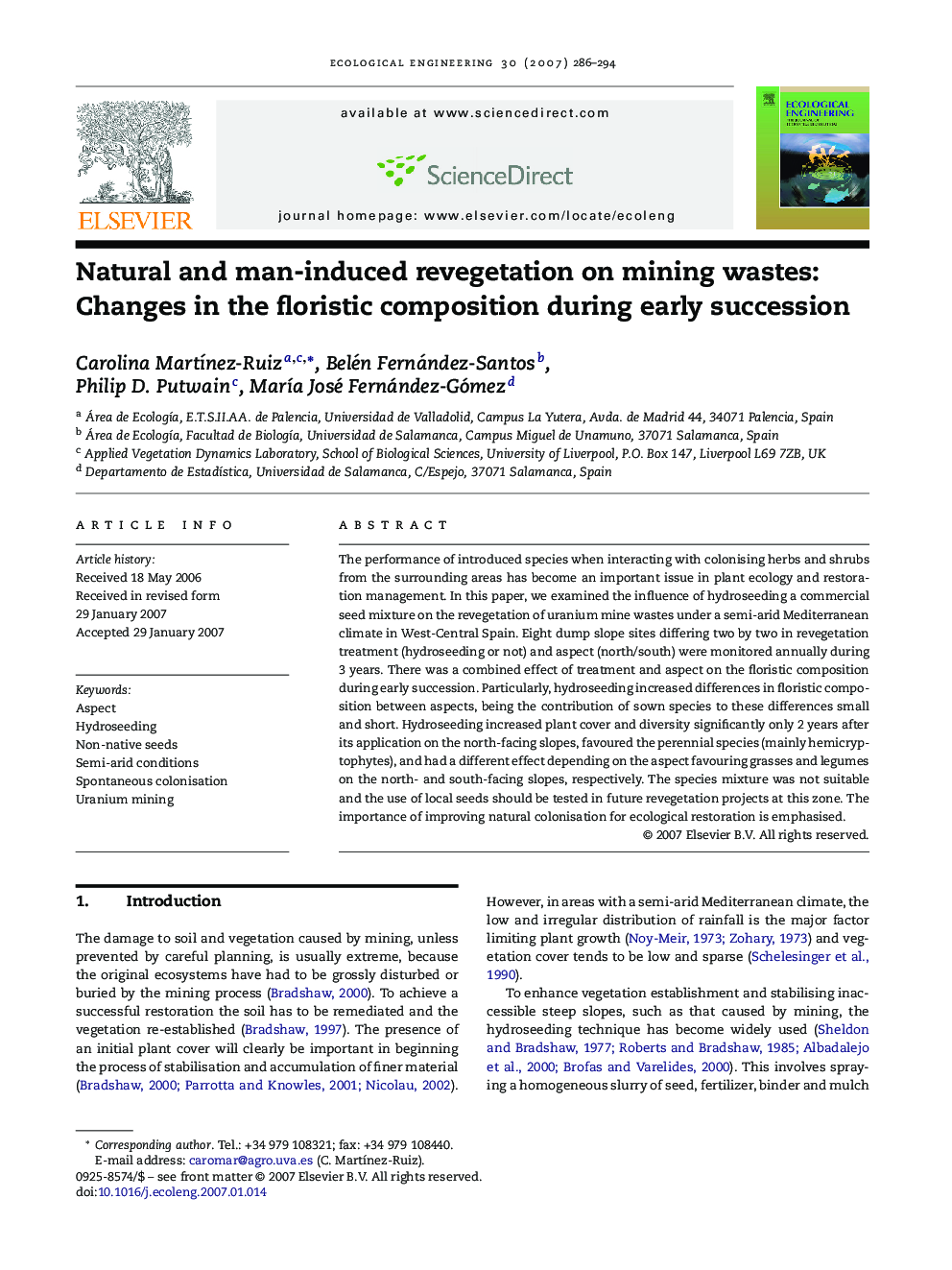| Article ID | Journal | Published Year | Pages | File Type |
|---|---|---|---|---|
| 4391099 | Ecological Engineering | 2007 | 9 Pages |
The performance of introduced species when interacting with colonising herbs and shrubs from the surrounding areas has become an important issue in plant ecology and restoration management. In this paper, we examined the influence of hydroseeding a commercial seed mixture on the revegetation of uranium mine wastes under a semi-arid Mediterranean climate in West-Central Spain. Eight dump slope sites differing two by two in revegetation treatment (hydroseeding or not) and aspect (north/south) were monitored annually during 3 years. There was a combined effect of treatment and aspect on the floristic composition during early succession. Particularly, hydroseeding increased differences in floristic composition between aspects, being the contribution of sown species to these differences small and short. Hydroseeding increased plant cover and diversity significantly only 2 years after its application on the north-facing slopes, favoured the perennial species (mainly hemicryptophytes), and had a different effect depending on the aspect favouring grasses and legumes on the north- and south-facing slopes, respectively. The species mixture was not suitable and the use of local seeds should be tested in future revegetation projects at this zone. The importance of improving natural colonisation for ecological restoration is emphasised.
